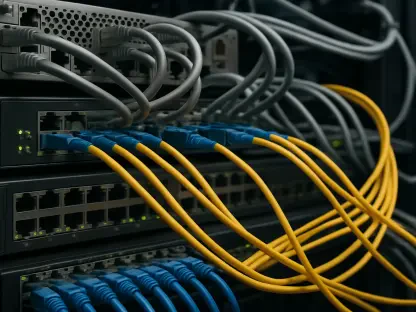With the sweeping changes in technology and the demands of modern society, broadband connectivity has emerged as an indispensable utility alongside water and electricity. As the world navigates this digital era, the backbone of broadband is increasingly reliant on operational resilience. This resilience is not simply about laying the initial infrastructure; it is about ensuring its long-term performance and adaptability in the face of unforeseen stressors. The $42.45 billion BEAD Program’s mission aligns with enhancing broadband access in underserved areas, illustrating the profound importance of operational resilience in fortifying these services for sustainable implementation.
The Necessity of Operational Resilience in Broadband
Designing Broadband with Resilience in Mind
Within the framework of broadband services, operational resilience is pivotal in maintaining seamless connectivity across various sectors, including education, healthcare, and commerce. Traditional infrastructure deployment is merely the first step. Networks must withstand pressures and maintain functionality during disruptions, requiring foresightful design. As connectivity becomes essential to everyday functioning, the elaboration on robust operational models is vital. When broadband infrastructure is resilient by design, it ensures that communities remain connected, even in challenging circumstances, ultimately supporting the broader digital ecosystem.
Modern Network Operations Centers (NOCs) have become strategic components in ensuring operational resilience within broadband networks. They serve as proactive hubs where technological agility meets systematic monitoring, allowing for the anticipation and mitigation of potential issues. By embracing a model emphasizing operational readiness, broadband providers can leverage cutting-edge tools and techniques, further solidifying these networks against both minor hiccups and significant crises. A resilient design extends beyond mere operational necessity into ensuring continuous and reliable network performance.
Leveraging Expertise Through Outsourcing
In recent trends, there’s a palpable shift toward outsourcing functions such as NOC and network engineering. This evolution reflects a strategic move towards optimizing operational excellence and cost efficiency. Outsourcing provides organizations with access to expert personnel, advanced technology, and relentless 24/7 monitoring and management, which are crucial elements in implementing a resilient broadband infrastructure. This approach is not merely about cost-cutting—it’s integral to empowering broadband service providers with sustainable, scalable models.
By employing third-party expertise, organizations can concentrate on refining and expanding service delivery rather than building exhaustive in-house capabilities. This reshaping of operational strategy coincides with the growing necessity for resilience, promising enhanced financial predictability alongside technological advancement. Providers under fiscal pressure find outsourcing an appealing strategy, ensuring that delivering robust connectivity does not come at the expense of financial stability and technological innovation.
Sophistication and Adaptation in Broadband Infrastructure
Navigating Network Transformations
The continuing evolution of broadband technology demands profound architectural insights, especially during key phases such as launching new ISPs or integrating advanced technologies. Complex network transformations require adept strategic execution and alignment, fostering a platform that minimizes long-term risks and mitigates the potential costly rework. This multifaceted perspective necessitates an operational model transcending traditional bandwidth-centric approaches, incorporating resilience as a fundamental design principle.
A sophisticated infrastructure, thus, becomes the backbone of a future-proof broadband network. Such transformation relies on partnerships with entities that provide multi-vendor and multi-domain expertise. These collaborations ensure that all facets of the network—hardware and software—work in harmony, minimizing fragmentation and operational inefficiencies. Robust broadband infrastructure must embrace flexibility, adaptability, and resilience at every level, positioning networks to support and enhance the socioeconomic landscape they serve.
Embedding Measurable Resilience
Embedding resilience as an inherent attribute of broadband infrastructure extends beyond enduring disruptions—it embodies a dedication to continually deliver seamless connectivity despite challenges. The industry now recognizes the importance of measurable resilience; indeed, laying a strong infrastructural foundation that’s equipped to evolve naturally with advancing technology and community needs is the hallmark of competent broadband service. Networks must be designed to recover efficiently, and therefore, resilient architectures inherently prioritize reliability.
As broadband becomes more deeply interwoven into everyday life, these systems’ capabilities to sustain both present needs and future demands become imperative. Layers of resilience mean that adaptability is no longer optional but a critical requirement, and infrastructure must be designed with the foresight to navigate and leverage emerging technological landscapes. By embedding measurable resilience, the broadband sector lays the groundwork for uninhibited progress.
Shaping a Resilient Broadband Landscape
In today’s rapidly advancing technological landscape and the evolving needs of modern society, broadband connectivity has become as essential as utilities like water and electricity. As the globe traverses this digital frontier, the solidity of broadband infrastructure depends significantly on its operational resilience. This resilience extends beyond setting up the initial network; it demands a focus on maintaining enduring performance and the ability to adapt to unexpected challenges. The $42.45 billion Broadband Equity, Access, and Deployment (BEAD) Program exemplifies a commitment to boosting broadband access in underserved communities. This initiative underscores the critical role operational resilience plays in solidifying these services, aiming for their sustainable execution. By fortifying broadband infrastructure, programs like BEAD ensure that even the most remote or underserved regions are not left behind in an increasingly connected world, emphasizing long-term reliability and adaptability in the face of unforeseen disruptions.









